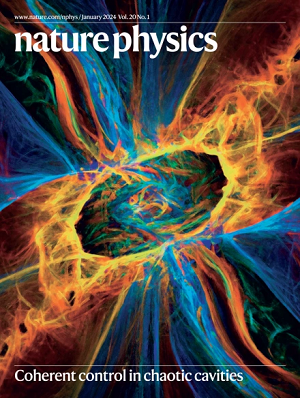带上质子兜风
IF 18.4
1区 物理与天体物理
Q1 PHYSICS, MULTIDISCIPLINARY
引用次数: 0
摘要
在这个原理验证演示中,研究小组将大约100个质子装入一个900公斤重的彭宁阱系统BASE-STEP中。在两台高架起重机和一辆拖车的帮助下,该系统随后穿过反物质工厂的大厅,运到装卸区,并上了卡车。BASE-STEP具有屏蔽、支撑结构和运输框架,以及带两个电池单元和一个液氦罐的不间断电源,可以在运输过程中连续运行超导磁体系统长达四个小时。一旦连接到电网上,就可以使用脉冲管冷却器来维持低温。卡车行驶了大约3.7公里,最大速度达到每小时42公里左右。在驱动过程中,莱昂哈特和同事们监测了系统的性能,包括超导磁体的温度和陷阱内质子云的稳定性。在把BASE-STEP带回原来的位置后,研究小组展示了他们可以分离质子云的一部分,并将它们从陷阱中喷射出来。这完成了捕获质子云无损传输的成功演示,代表了在四小时限制内将反质子传输到实验室的重要一步。本文章由计算机程序翻译,如有差异,请以英文原文为准。

Take protons for a ride
求助全文
通过发布文献求助,成功后即可免费获取论文全文。
去求助
来源期刊

Nature Physics
物理-物理:综合
CiteScore
30.40
自引率
2.00%
发文量
349
审稿时长
4-8 weeks
期刊介绍:
Nature Physics is dedicated to publishing top-tier original research in physics with a fair and rigorous review process. It provides high visibility and access to a broad readership, maintaining high standards in copy editing and production, ensuring rapid publication, and maintaining independence from academic societies and other vested interests.
The journal presents two main research paper formats: Letters and Articles. Alongside primary research, Nature Physics serves as a central source for valuable information within the physics community through Review Articles, News & Views, Research Highlights covering crucial developments across the physics literature, Commentaries, Book Reviews, and Correspondence.
 求助内容:
求助内容: 应助结果提醒方式:
应助结果提醒方式:


